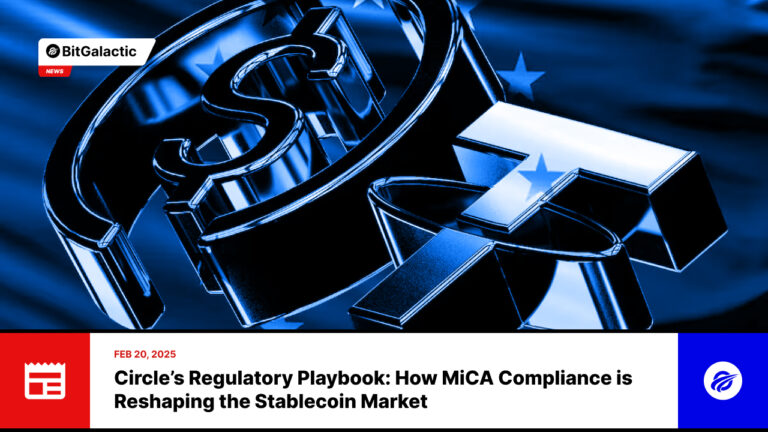Circle’s Regulatory Playbook: How MiCA Compliance is Reshaping the Stablecoin Market.
The European Union’s Markets in Crypto-Assets (MiCA) regulation is shaking up the stablecoin industry, creating winners and losers in the process. One clear beneficiary? Circle, the issuer of USDC, which is leveraging regulatory compliance to gain a significant edge over its biggest competitor, Tether.
MiCA’s Impact: A Game Changer for Stablecoins
In recent weeks, major exchanges such as Crypto.com and Kraken have delisted non-compliant stablecoins, with Tether’s USDT—the market’s largest stablecoin at $142 billion—taking the biggest hit in the EU. Meanwhile, Circle has secured an Electronic Money Institution (EMI) license from the French regulator ACPR, ensuring its ability to operate under MiCA’s stringent requirements.
Eli Cohen, general counsel at Centrifuge, believes this regulatory shift positions Circle as the dominant player in the European stablecoin market. “Circle will take Tether’s market share,” Cohen told DL News. “They’re really the only game in town right now.”
The Challenges of Compliance
MiCA mandates that large stablecoin issuers keep at least 60% of their reserves in credit institutions and undergo independent audits every six months. While Circle’s compliance offers a clear advantage in the EU, it also presents operational challenges. Managing a regulatory framework in Europe while maintaining a global presence could force Circle to split USDC into two versions: a MiCA-compliant European USDC and a non-European version.
Tether, on the other hand, has opted to avoid compliance, with a spokesperson arguing that MiCA could introduce new risks for local banks and consumers. This stance, however, places Tether at a competitive disadvantage in the European market.
BitGalactic’s Take: Strategic Moves or Regulatory Headwinds?
At BitGalactic, we see this as more than just a regulatory hurdle—it’s a strategic shift in the crypto landscape. The EU’s tightening grip on stablecoin issuers mirrors trends in the U.S., where lawmakers are pushing for stricter oversight. With both jurisdictions enforcing stronger regulations, stablecoin providers must adapt or risk obsolescence.
Moreover, USDC’s 16% circulation growth over the past month compared to USDT’s 2.5% signals an early market response to MiCA. But does this mean a smooth path for Circle? Not necessarily.
The cap on non-euro stablecoin transactions—one million transfers or €200 million per day—could stifle stablecoin adoption in Europe. With the majority of stablecoin activity still centered around USD-backed assets, regulatory restrictions may hinder rather than foster innovation.
Polygon CEO Marc Boiron, however, remains optimistic, arguing that “regulatory clarity isn’t a roadblock—it’s a catalyst.” If true, MiCA could eventually boost adoption by providing institutions with the confidence to integrate stablecoins into real-world applications.
What’s Next for Stablecoins in Europe?
Circle has also launched a euro-backed stablecoin, EURC, to mitigate MiCA’s restrictions. With a market cap of $103 million, it currently dwarfs Tether’s euro stablecoin, EURT. However, euro stablecoins remain niche compared to their USD counterparts, primarily due to weaker network effects and adoption barriers.
So, is MiCA an opportunity or an obstacle? BitGalactic predicts a mixed outcome: While regulatory clarity benefits institutional adoption, restrictive caps and compliance burdens could limit stablecoin innovation in the short term. The real test lies in how flexible the EU will be in adjusting regulations to accommodate the fast-moving crypto market.
One thing is clear: the stablecoin battle in Europe has only just begun, and the winners will be those who can navigate the regulatory maze while maintaining global scalability.
Share this post


